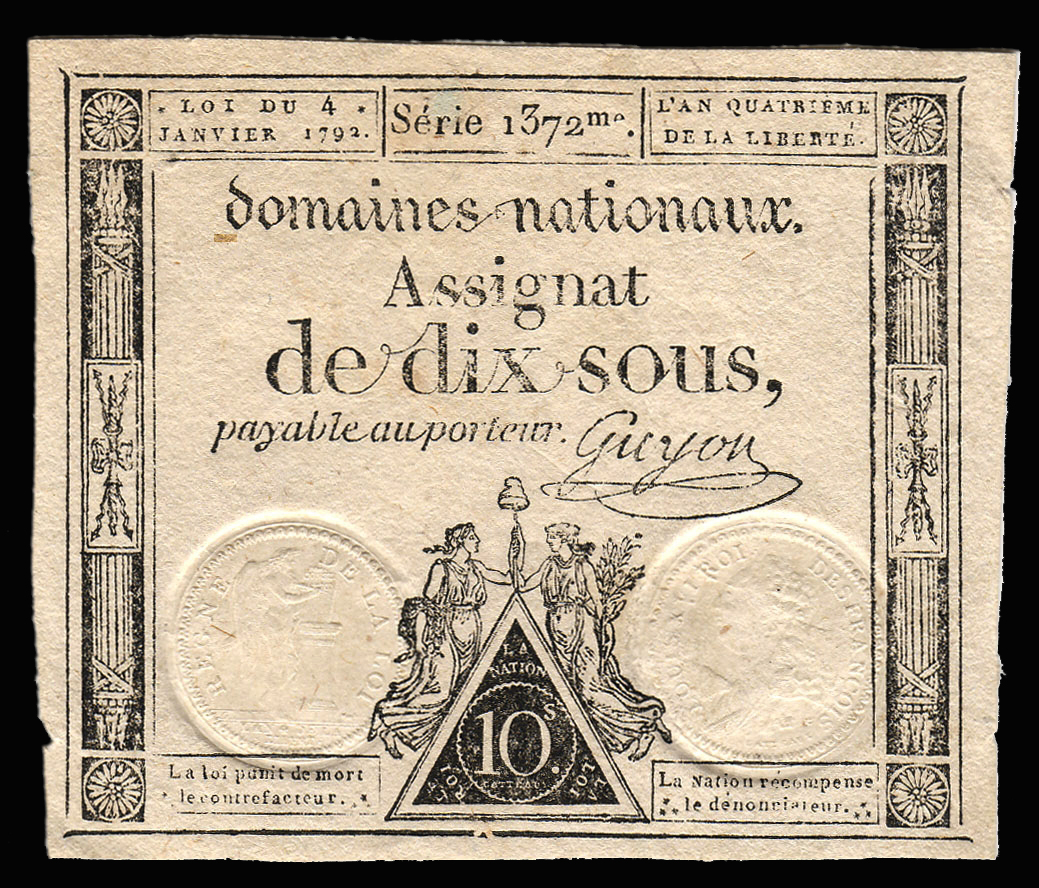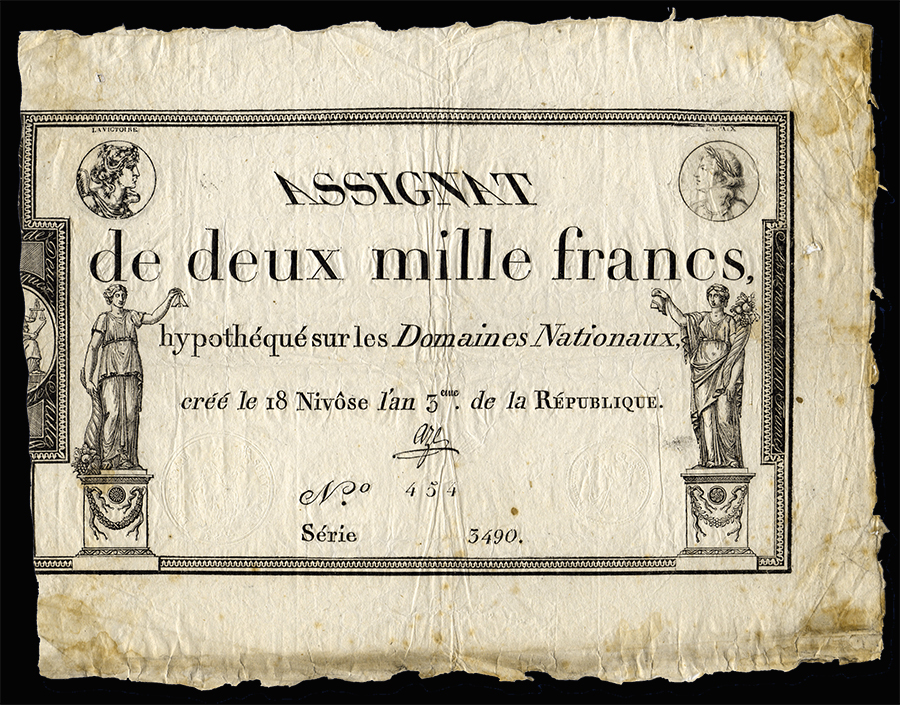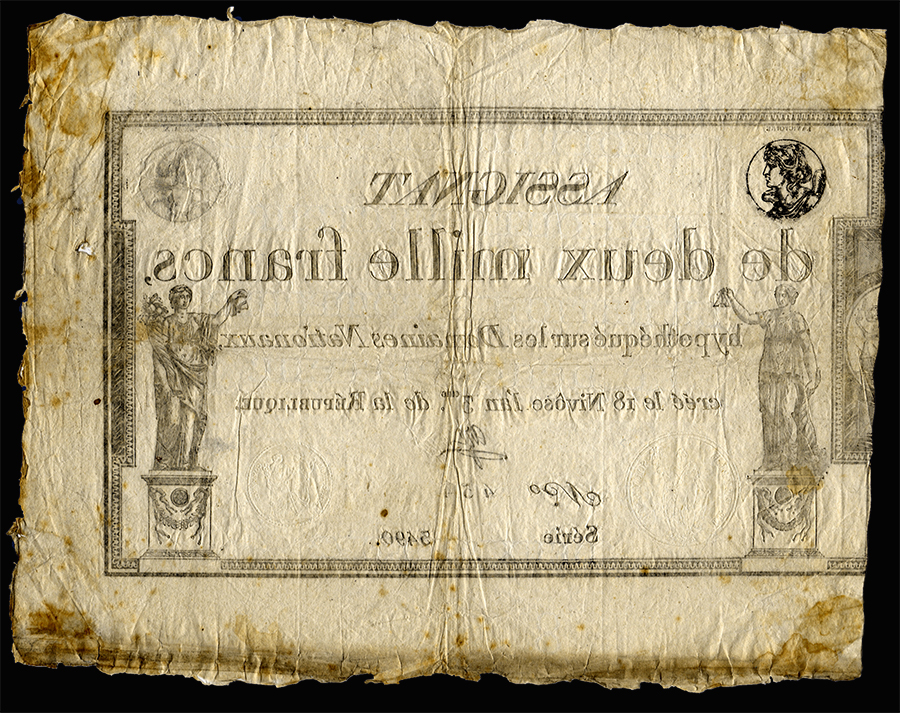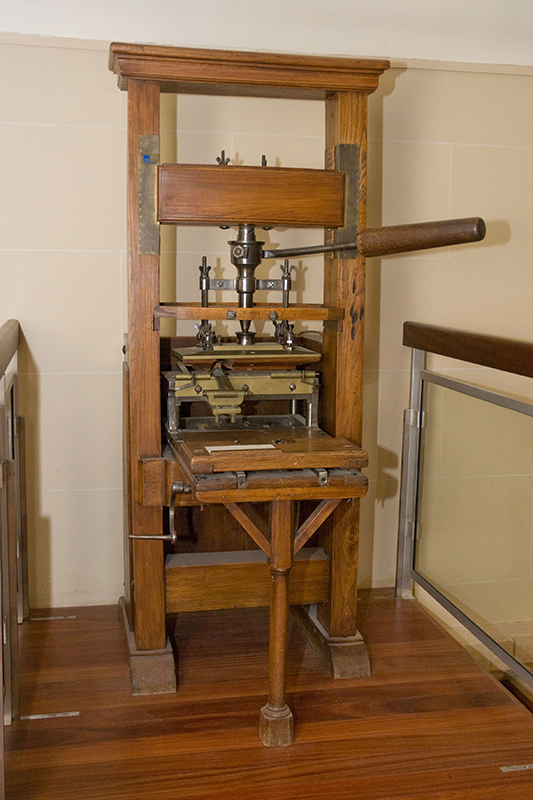From 1789 to 1795, some 1.2 billion assignat notes were issued in Revolutionary France, with a total nominal value of 40 billion livres tournois. To illustrate this phenomenon, the Cité de la Monnaie et de l’Economie will display an assignat press, on loan from the Monnaie de Paris (Paris mint).
Following the nationalisation of church properties in November 1789, the revolutionary government, or National Assembly, decided to issue interest-bearing certificates representing a share of the value of this confiscated wealth. The certificates constituted a claim on the government and were secured against, or “assigned” to, a portion of church properties, hence their name “assignats”. The government’s original intention was to redeem and cancel the issued certificates as and when the nationalised properties were sold off.
However, the sale of church land proved more complex and long-winded than expected. In response, the government issued a decree in April 1790 stating that assignats would be considered legal tender alongside the gold and silver coins already in circulation. In October that year it cancelled all interest payments on the certificates, effectively turning them into a form of paper currency, but at the same time paving the way for an astronomical rise in issuance.
Originally limited to 400 million livres in 1789, the total value of notes in circulation increased to 1,200 million livres in 1790. Thereafter issuance began to accelerate sharply, especially after April 1794 when more money was needed to cover the costs of war. The number of assignats in circulation no longer bore any relation to the value of church properties; in April 1794 there were a total of 8 billion livres of assignats in circulation, but by April the following year this figure had risen to 45 billion.
The public soon lost faith in the currency: in September 1793, a law was passed stating that refusing to accept assignats as payment, or even making comments that might discredit the currency, was punishable by death.
In December 1795 the Directoire decided to stop issuing assignats and to destroy all equipment used in their manufacture. A public destruction was held on 18 February 1796, in Place Vendôme in Paris: nearly all assignat printing plates and matrices were smashed, and the paper used to manufacture the notes was burnt, as were a number of the notes themselves, in a dramatic auto-da-fé that marked the end of the six-year-old monetary system. Place Vendôme is only a short distance from the Capucines convent where the assignat printing works were located from 1792 onwards; the convent itself was destroyed at the start of the 19th century to make way for rue de la Paix. In February 1796, when the manufacturing equipment was destroyed, assignats were worth only 1/280th of their initial value.
The assignat system was a spectacular monetary failure. After the disastrous Law episode of 1719, it only served to increase public mistrust of paper money.
One the positive side, however, it did encourage technical innovations both in paper manufacture and in printing.
Traditional methods proved too slow for the mass production of assignats. Techniques in 1789 had barely changed since the mid 15th century when moveable type printing was first introduced in Europe, and there had been few advances in printing press technology since the invention of the first Gutenberg model. Individual characters were assembled onto a frame, or forme, and a coat of ink was applied using leather-covered ink balls. The forme was laid on a horizontal stone or bed and covered with a sheet of paper. The operator then lowered a platen onto the bed using a large threaded screw, pressing the inked characters onto the paper.
At the instigation of Anisson-Duperron, head of the royal printing works from 1785 to 1792, the original wooden platen used since the 15th century were replaced with metal ones, which only needed to be pressed down once rather than twice previously. This cut printing times considerably for assignats, but as production soared into the millions, printers began to look for new ways of streamlining the process.
One of the advances was the replacement of moveable type (where the characters had to be assembled into words one by one) with a single printing plate, or stereotype, which was cast from a matrix bearing a complete “image” of the assignat. Two assignat matrices, on loan from the French National Library, will also be on display at the Cité de l’Economie et de la Monnaie.
The introduction of assignats was quickly followed by the emergence of fake notes, prompting printers to look for increasingly sophisticated ways of combating counterfeiting. The authorities tried out a number of techniques: watermarks, the application of an embossed seal or identical seals on front and back, or the application of different signatures.
From the outset, the main method of authentication was to give each assignat an individual number. The numbering was initially done manually by employees of the Treasury, a process that was often long and painstaking. From 1792 onwards attempts were made to automate the process, leading eventually to the invention of Richer’s numbering machine, which was first implemented in October 1793. The device was attached to the printing press so that the assignats could be numbered as they were produced.
The assignat press which will be displayed at the Cité de l’Economie et de la Monnaie is an original from the French Revolution and is a single-impression machine with an automatic numbering device.
........................................
Thanks go to our colleagues at the Monnaie de Paris and the CNAM Museum (National Conservatory for Arts and Crafts) for their help re-reading this article.
........................................
Sources :
"L’argent des révolutionnaires", (The revolutionaries’ money), exhibition by Alain Mercier, CNAM Museum
“Les trois révolutions du livre” (Three book revolutions), exhibition at the CNAM Museum; Les assignats et les papiers monnaies émis par l’État au XVIIIe siècle (“Assignats and the paper money issued by the State in the 18th century”), Jean Lafaurie, Le léopard d’or.
Photos :
A 10-sous assignat from 1792. Ten sous were equivalent to half a livre, which was the currency used until 1795. The embossed stamp (circle) on the left shows a Genius engraving the word “Constitution” onto the tablets of the Law (the embossing was created by the sculptor Dupré); the stamp on the right shows Louis XVI, King of the French. The text in the bottom corners of the note reads: (left) “Counterfeiting shall be punishable by death”; (right), “Informers shall be rewarded by the nation”.
Credit: Banque de France collection – photo Banque de France
A 2,000-franc assignat from 1795 (front and back). The franc replaced the livre from the start of 1795. Reference was no longer made to the king: France became a Republic in September 1792 and Louis XVI was sent to the guillotine in January 1793.
Credit: Banque de France collection – photo Banque de France
The Monnaie de Paris’ assignat printing press.
Credit : Monnaie de Paris
Published on 09 January 2014. Updated on 13 June 2024
Explore also...
-
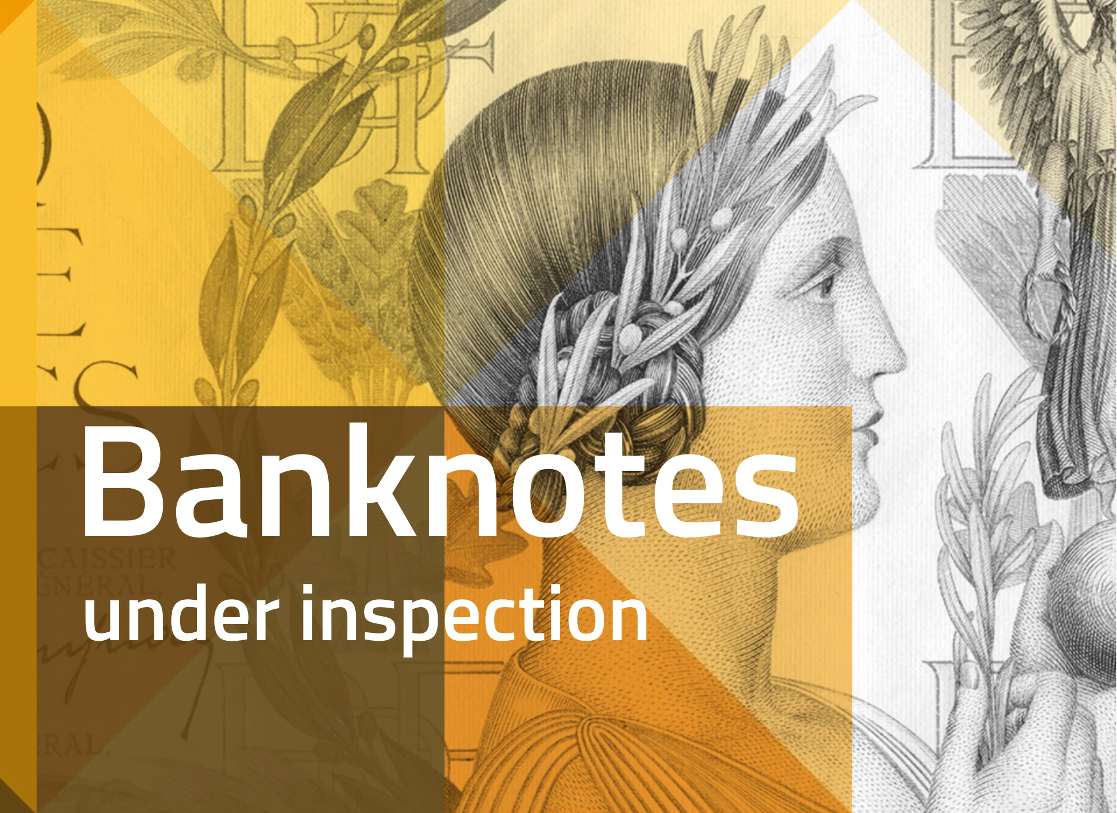
The City, Resources, The keys of the economy, Treasures, Banknotes and coins
Banknotes under inspection
-

The City, Resources, The keys of the economy, Treasures, Banknotes and coins
Coins under inspection
-

The City, Resources, The keys of the economy, Treasures, Banknotes and coins
Banknotes under inspection
-

The City, Resources, The keys of the economy, Treasures, Banknotes and coins
Coins under inspection
-

The keys of the economy, Players, Businesses
A game (in French) for learning about economics

